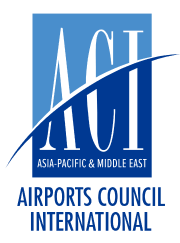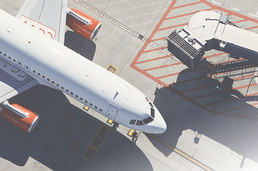A new era in security screening -- X-ray diffraction drives security and efficiency to the next level
- 2024-07-17

Automatic, non-invasive security screening, cutting-edged solutions are helping airports around the world transform passenger checkpoints and achieve the highest levels of security and operational efficiency. Mr. Joachim Petry, Business Development Manager, X-ray Diffraction, Smiths Detection, provides us new insights on how X-ray diffraction (XRD) technology is evolving passenger experiences at airports.
X-ray diffraction (XRD) technology is a major step change in automatic, non-invasive security screening. It delivers highly accurate material analysis to identify the diverse and evolving threats from dangerous goods, prohibited items and the constantly changing composition of substances such as homemade explosives and narcotics. This screening approach not only elevates security standards but also increases efficiency by reducing the need for on-screen-resolution, trace detection or other manual inspections.
Combining versatile, precise detection with high levels of automation effectively addresses the challenges faced by a range of aviation security operations – including hold baggage screening, fast forwarding air cargo and customs checkpoints.
How does it work?
XRD is a well proven inspection technology which analyses and identifies substances based on molecular structure. It creates a ‘diffraction fingerprint’ to differentiate between materials – even those with very similar densities. This approach makes it particularly suitable for automatically resolving alarms generated at Level 1; and for detecting inconsistent powder, liquid or solid compounds.

Automating alarm resolution is a game-changer
Multi-level baggage handling and fast forward air cargo operations are both under pressure to screen huge volumes quickly and efficiently. Automatic Explosives Detection Systems (EDS) typically clear 70-80% of bags at Level 1 – with the remaining 20-30% alarmed images sent to analysts for on-screen resolution at Level 2. XRD technology can redefine this process by automating up to 80% of Level 2 decisions – improving both security and efficiency.
A powerful weapon against drug trafficking
The war against illegal narcotics is being fought on many fronts but mutations in shape and form as well as physical characteristics when drugs are cut with other substances, all make narcotics detection very complex. With its precise approach, XRD transforms the process of screening passenger luggage and parcels for drugs – as well as other prohibited items and contraband.
Optimum efficiency
Exceptional detection with a very low false alarm rate and minimal manual inspection means staff resources can be better deployed, productivity improved and operational costs cut.

The innovative XRD powered Smiths Detection SDX 10060 XDi can easily be integrated into baggage handling systems alongside EDS scanners; and each one can receive alarm queries from multiple Level 1 systems. For narcotics screening at, for example, customs control points, it can also be used as a standalone scanner or integrated into a baggage or materials handling system for higher volume applications. Proof of concept demonstrations are already underway in Europe.
Future proof security
Automated alarm resolution takes security to new levels by reducing human intervention and error - machines deliver consistent, reliable results and do not tire.

XRD also utilises one of the few technologies likely to meet the requirements of new regulatory standards which will inevitably be needed in response to evolving threats. Detection libraries will be continually developed with more algorithms introduced to deal with an expanding list of targets. All of which helps to future proof the various different operations.
Mr. Joachim Petry is the Business Development Manager, X-ray Diffraction at Smiths Dectection. Coming from an engineering background, Mr. Petry acquired experience in various X-ray based operations including security screening, non-destructive testing and high-energy applications. Currently, Mr. Petry is focussed on the market introduction of SDX 10060 XDi, offering new options for security screening and contraband detection facilitated by the latest generation of X-ray diffraction based technology.
---------------------------------------------------------------------------------------------------------------------------------------------
This article was provided by a third party. The views expressed in the article do not represent or reflect the views of ACI Asia-Pacific & Middle East. Inclusion of any link to other external sites does not imply endorsement by ACI Asia-Pacific & Middle East of those sites and ACI Asia-Pacific & Middle East shall not be held responsible or liable for any content, advertising, products or other materials on or available from such external resources and sites.
- CATEGORY
- COUNTRY / AREA
- United Kingdom
- AUTHOR
- Joachim Petry, Business Development Manager X-ray DiffractionSmiths Dectection







